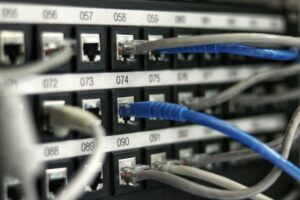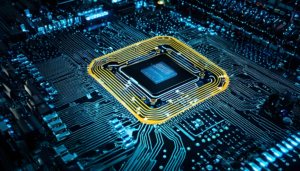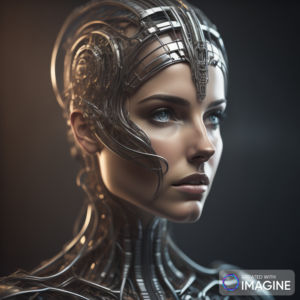Understanding Neural Networks in Artificial Intelligence

Artificial Intelligence (AI) has revolutionized the way machines learn and make decisions by imitating human intelligence. One of the most powerful and versatile tools in the AI toolkit is the Neural Network. Inspired by the human brain’s intricate network of neurons, a neural network is a key component of deep learning, enabling machines to perform complex tasks like image recognition, natural language processing, and autonomous decision-making. In this article, we will explore what a neural network is, how it functions, and its significance in the realm of AI.
What is a Neural Network?
A neural network is a type of computational model that mimics the way neurons in the human brain communicate and learn. It consists of interconnected nodes, known as artificial neurons or “perceptrons,” arranged in layers. Each neuron takes input, processes it using a set of learned parameters (weights and biases), and produces an output signal that is then passed on to subsequent neurons. The neural network’s strength lies in its ability to learn from data and adapt its parameters to perform specific tasks effectively.
The Architecture of a Neural Network
A typical neural network comprises three main layers: the input layer, one or more hidden layers, and the output layer. The input layer is responsible for receiving the raw data, which is then transformed and processed through the hidden layers, leading to the final output in the output layer. Each connection between neurons has an associated weight, which determines the strength of the connection. Additionally, biases are used to adjust the output of each neuron.
The Hidden Layers and Activation Functions
The hidden layers in a neural network play a vital role in learning and abstraction. They allow the network to create complex internal representations of the input data, enabling it to discover patterns and relationships that might not be apparent in the raw data.
Activation functions are applied to each neuron’s output to introduce non-linearity into the neural network, which increases its capacity to approximate complex functions. Popular activation functions include the sigmoid, ReLU (Rectified Linear Unit), and tanh (hyperbolic tangent), each with its strengths and weaknesses.
Training a Neural Network: The Backpropagation Algorithm
Training a neural network involves fine-tuning the parameters (weights and biases) to minimize the difference between the predicted output and the actual target output. The process of training a neural network is accomplished through the backpropagation algorithm.
Backpropagation works by computing the gradient of the error with respect to each parameter in the network. This gradient points in the direction of steepest increase in the error, allowing the algorithm to adjust the weights and biases in the opposite direction to minimize the error. This iterative process continues until the network achieves satisfactory performance on the training data.
Applications of Neural Networks
The applications of neural networks span across various fields, and their versatility has made them indispensable in modern AI. Some prominent applications include:
- Image and Speech Recognition: Neural networks can identify objects, faces, and speech patterns from visual and auditory inputs, enabling technologies like self-driving cars and voice assistants.
- Natural Language Processing (NLP): NLP-powered neural networks can understand, process, and generate human language, facilitating machine translation, sentiment analysis, chatbots, and more.
- Healthcare: Neural networks assist in medical image analysis, disease diagnosis, drug discovery, and predicting patient outcomes based on historical data.
- Gaming and Robotics: Neural networks can be employed to create intelligent agents in games and robots capable of navigating complex environments.
Conclusion
Neural networks are the backbone of modern artificial intelligence, bringing us closer to achieving tasks that once seemed impossible for machines. By simulating the neural connections of the human brain, these networks demonstrate a remarkable capacity to learn from data and generalize knowledge to make informed decisions. As AI continues to advance, neural networks will undoubtedly remain at the forefront of groundbreaking technological achievements, shaping the future of industries and our daily lives.
Business Listings Related to the Article: Understanding Neural Networks in Artificial Intelligence
Vision India Services
Vision India Services Pvt Ltd remains a forefront trailblazer in furnishing staffing and Human Resources Management solutions that aptly address the ever-shifting and distinct requisites of businesses spanning the globe.
- Category
- Business Services
More Articles Like: Understanding Neural Networks in Artificial Intelligence
Unlocking the Power of InfiniBand: A Primer on High-Speed Networking
In the realm of high-performance computing (HPC), where processing vast amounts of data in minimal time is paramount, the infrastructure supporting these operations plays a pivotal role. One such critical component is InfiniBand, a high-speed interconnect technology that has become the backbone of many supercomputers, data centers, and enterprise environments. In this article, we’ll delve […]
AI and Quantum Computing: A Powerful Combination
In recent years, both Artificial Intelligence (AI) and Quantum Computing have emerged as groundbreaking technologies with the potential to revolutionize various industries. While AI has already made significant advancements in areas such as machine learning and data analysis, Quantum Computing is still in its early stages of development. However, when these two technologies converge, the possibilities become truly extraordinary. […]
Demystifying AI Models: The Brains Behind Artificial Intelligence
In the ever-evolving landscape of technology, Artificial Intelligence (AI) has emerged as a transformative force with the potential to reshape industries and human experiences. At the heart of this AI revolution lies the concept of AI models, the digital brains that power intelligent machines and applications. In this article, we’ll explore what AI models are, […]





